Home / Resources
Resources
Discover a Wealth of BPM Knowledge and Expertise at BPMInstitute.org!

BPM can be a Life Saver in the Midst of Grey Wave
Like it or not, we are about to see an unprecedented brain drain when the baby boomer generation heads towards the retirement sidelines. This phenomenon
is known as the “Grey Wave.” Experts are saying that no amount of hiring and/or labor importation will be able to cope with the amount and pace of retirements. This means that large increases in productivity are not optional, but mandatory.

SOA Watch: When Considering Services…
Services are the building blocks of SOA, and like building blocks of a house or a building, the quality will define the value of the finished product. In this case, the SOA itself.

The Business Architecture Life Cycle
In the realm of Information Technology, a commonly-employed software development methodology is the Systems Development Life Cycle, usually abbreviated SDLC, which describes a systematic, if generalized approach to developing and deploying new software. While details can vary, the steps typically include analysis, design, implementation, testing, and maintenance.

BPMS Watch: BPM Hall of Fame
Is there a BPM Hall of Fame? I don’t think so, but there should be, to recognize the true pioneers and innovators in the field. BPM’s core ideas and technologies come from several divergent fields, and my list would include those who first introduced them – ideas about what a business process is, and what managing one really means. Thinking about who should be in a BPM Hall of Fame is a fun exercise, and you might it helpful in framing your own views.
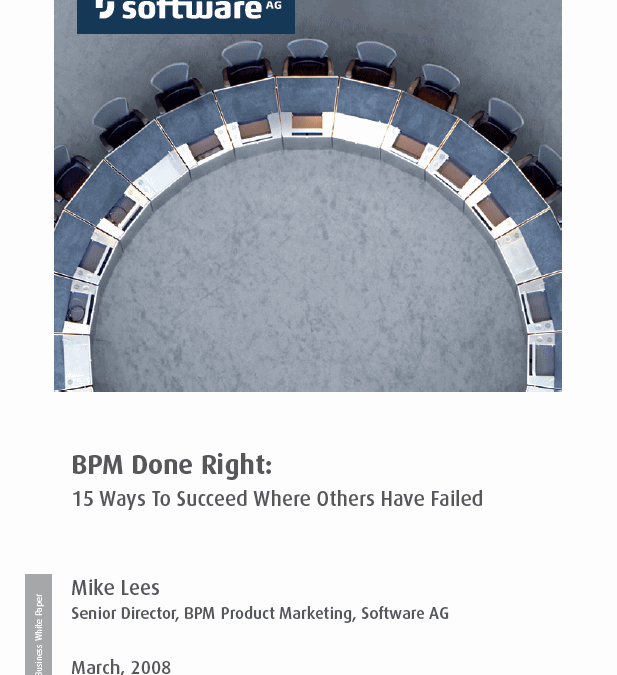
BPM Done Right: 15 Ways To Succeed Where Others Have Failed
BPM’s promises are real, but the path to success is littered with pitfalls and shortcuts to failure. Best practices can help you avoid them. The good news is that BPM has now reached a stage of maturity which ensures that customers who are just embarking on using its methods and tools have a wealth of experience to learn from and build on. To succeed with BPM, you will need to develop your own best practices and constantly evolve them to stay ahead of the competition. The following “lessons-learned” provide a good place to start.
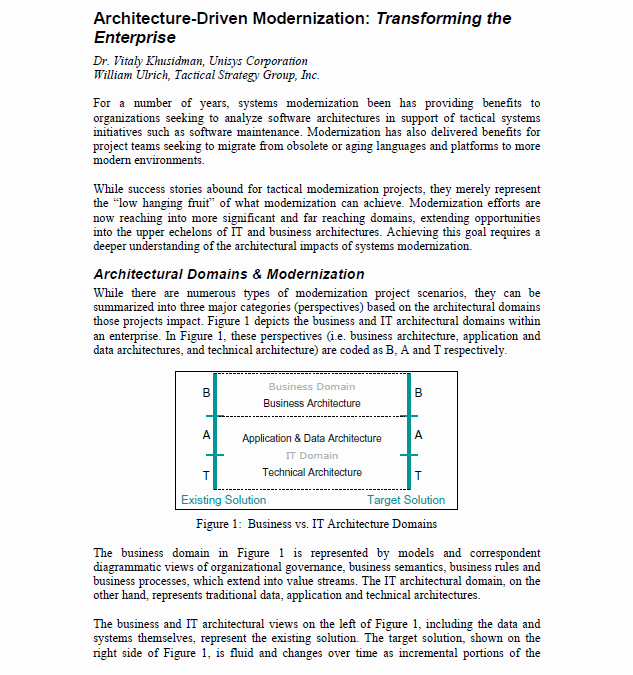
Architecture-Driven Modernization: Transforming the Enterprise
For a number of years, systems modernization been has providing benefits to organizations seeking to analyze software architectures in support of tactical systems initiatives such as software maintenance. Modernization has also delivered benefits for project teams seeking to migrate from obsolete or aging languages and platforms to more modern environments.
While success stories abound for tactical modernization projects, they merely represent the “low hanging fruit” of what modernization can achieve. Modernization efforts are now reaching into more significant and far reaching domains, extending opportunities into the upper echelons of IT and business architectures. Achieving this goal requires a deeper understanding of the architectural impacts of systems modernization.
BPM Supports a New Way of Working – The Dynamics of Swarming
What makes a flock of birds or a school of fish move as if they are a single entity? What makes them all suddenly rise, turn and accelerate at the same time? There is something else at work here than just a leader bird or a captain fish telling all the others what to do. This quick coordinated behavior from large groups of individuals is called swarming.
Deciding on the Right Level of Business Process Documentation
One of the most ambiguous terms in business today is “process documentation”. It has become the key phrase looked for whether it’s a prospective employee looking for that process-centric organization, an employer trying to lure talented workers or a CEO providing proof of compliance to corporate auditors or assuring the Board of Directors that the organization has achieved a process maturity level consistent with its key goals and objectives.
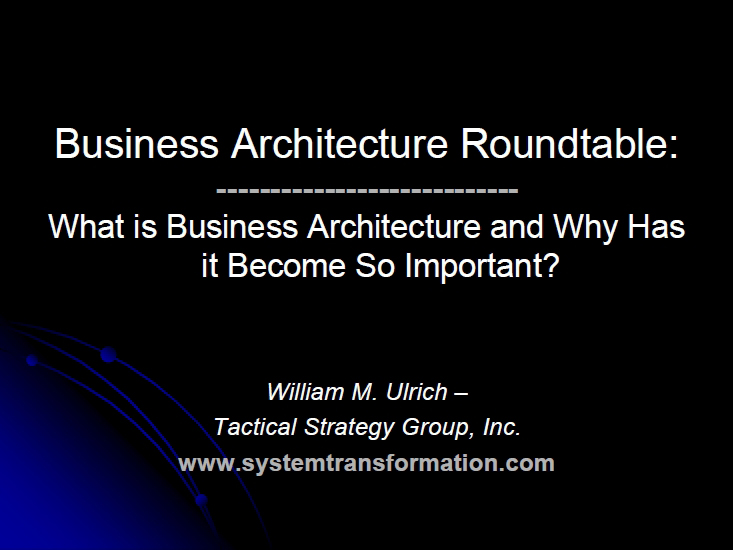
What is Business Architecture and Why Has it Become So Important?
Business architecture is the critical bridge between business strategic and operational planning and technology at an enterprise level. This Round Table will explain why it is becoming more important in 2008.
Business Architecture survey results will also be discussed.
Featured Speakers
William Ulrich, President, TSG, Inc. and Co-Chair BPMInstitute.org’s Business Architecture Conference Series
William Ulrich is President of TSG, Inc. and a strategic planning consultant.

Integrating Lean and Six Sigma
Both the Lean and the Six Sigma methodologies have proven that it is possible to achieve dramatic improvements in cost, quality, and time by focusing on process improvement. Six Sigma is focused on reducing variation and improving process yield by following a problem-solving approach using statistical tools, Lean is primarily concerned with eliminating waste and improving flow by following the Lean principles and a defined approach to implement each of these principles.

Business Architecture: Post Merger/Acquisition
Any Business Architect can make a case for developing and maintaining business architecture for any business situation; it is the best way to create agility, align IT with the business, and establish the governance that keeps the business focused on the stated strategy. However, there is one situation that benefits from business architecture that is more obvious than any other – merger/acquisition.
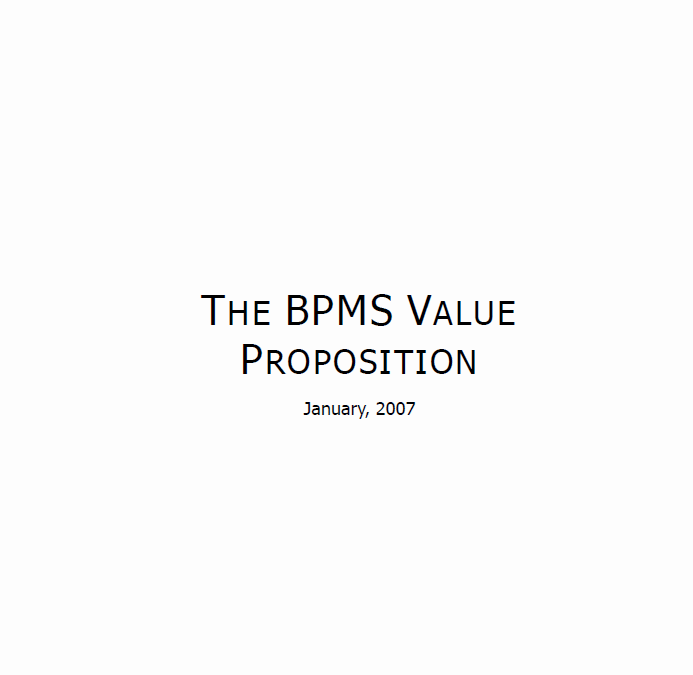
The BPMS Value Proposition
It seems the more technology transforms the way you run your business, the higher the bar of customer expectations is raised, and the faster the pace of change accelerates. You’re doing things faster and better than ever, at lower cost, and on a more global scale, but you still feel you’re falling behind. Your twenty-first century pain points make you long for the days when the biggest worry was Y2K.

BPMS Watch: Organizing Complex BPMN Models
When you first begin to model processes with BPMN, it’s hard to look past the challenge of the notation itself – all the event types, flow control patterns, exception handling patterns, and the rules for sequence flows and message flows. With a bit of training and practice, the rules and diagram patterns soon become second nature, and that part of the modeling effort gets easy.

Adapting ERP Solutions, via SOA, to the Business Needs of Government
Government decision makers faced with the need to streamline their business operations have begun to worry that the architectural construct we call services-oriented architecture (SOA) cannot be reconciled with the implementation of bundled, enterprise-wide product suites – a.k.a. Enterprise Resource Planning (ERP) solutions.
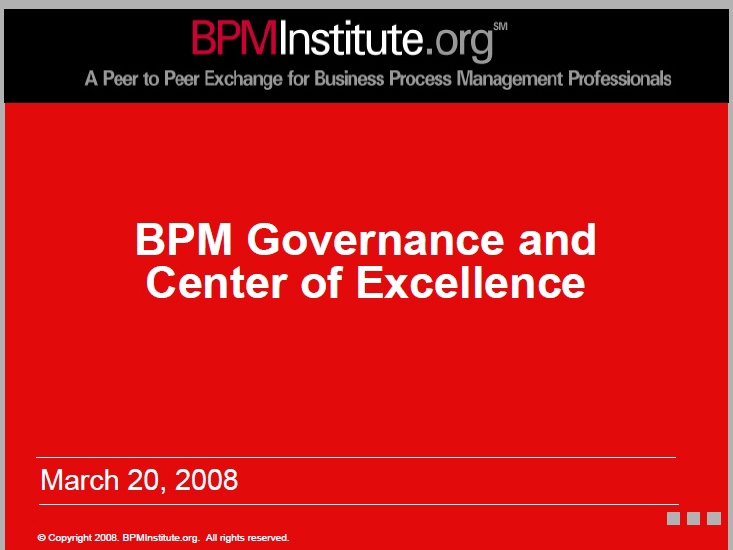
Best Practices for Building BPM & SOA Centers of Excellence
This round table will describe the BPM and SOA full-day training courses being held at the BrainStorm event series in 2009 and online. The goal is to train the attendees how to develop the essential elements that are needed to successfully justify, launch and to then evolve a Business Process Management office in your organization and an SOA Center of Excellence.
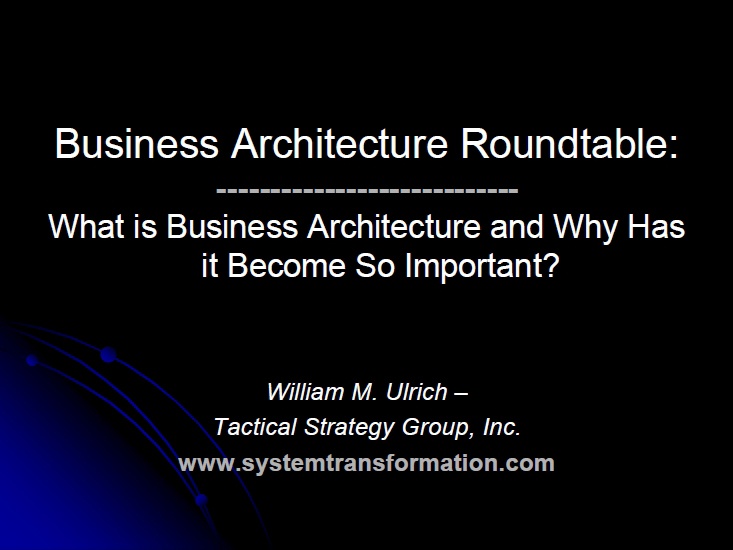
What is Business Architecture and Why Has it Become So Important?
Business architecture is the critical bridge between business strategic and operational planning and technology at an enterprise level. This Round Table will explain why it is becoming more important in 2008.
Business Architecture survey results will also be discussed.
Featured Speakers
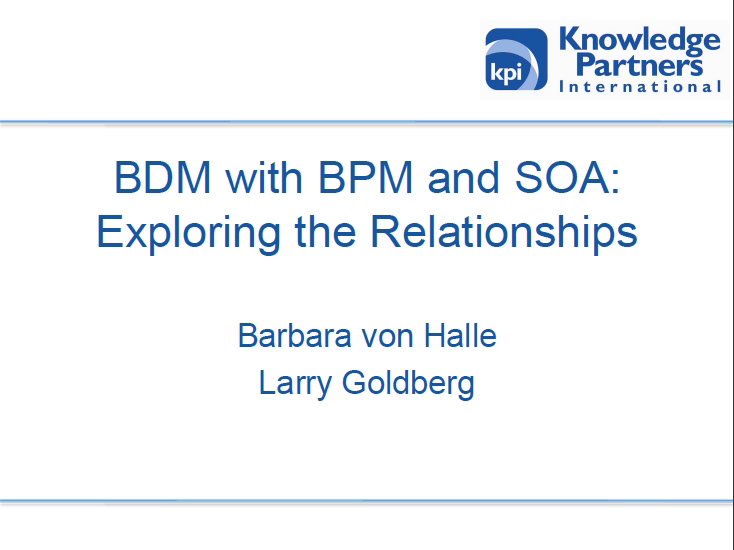
Tipping Points Round Table Series – BDM with BPM and SOA: Exploring The Relationships
Business Decisions are the missing link joining BPM and SOA to Business Rules. The Round Table explores strategies for maximizing ROI for operational business decisions and BPM/BDM projects. It discusses the benefits attained and agility gained when organizations externalize and manage Decisions and Business Rules.
This round table is now available on-demand.

SOA Watch: Most SOA Consultants Need a Lesson in SOA
Many people in the planning stages for SOA do not get the proper advice and guidance as to how to proceed, or even what a SOA actually is.

The Real Reason to Build a Business Architecture
Today many companies are considering whether or not to undertake a Business Architecture (BA) initiative. Many strategic research and service firms have recognized the importance of linking the BA to the strategy and integrating the BA with its supporting IT architectures, in an Enterprise Architecture (EA) framework. These firms have frequently reported on the BA’s increasing value to successful companies and provided sound reasons for undertaking the initiative. But, this does not make it a sure thing for the enterprise. So, why is a Business Architecture initiative an important one?

The Softer Side of BPM
“The first and most important step toward success is the feeling that we can succeed.” Nelson Boswell, Author













